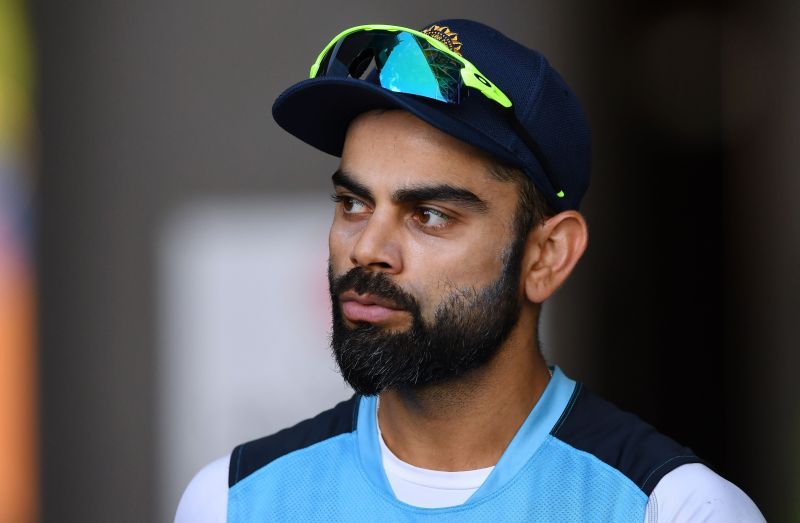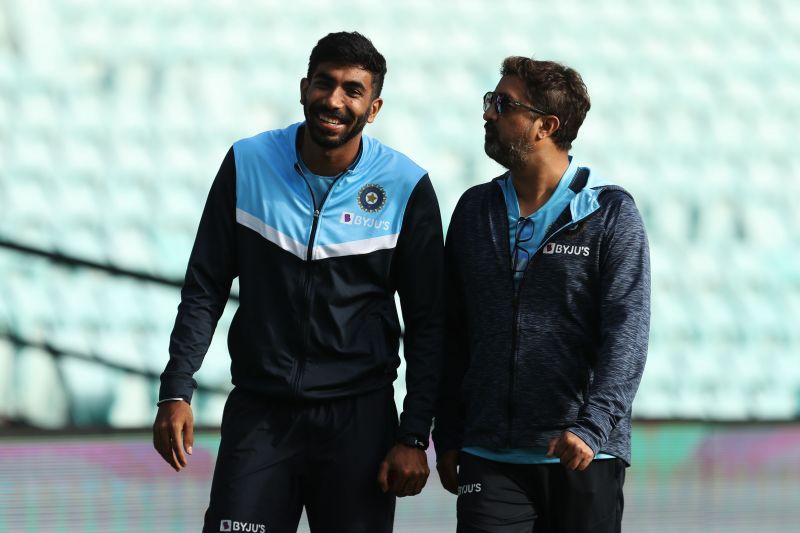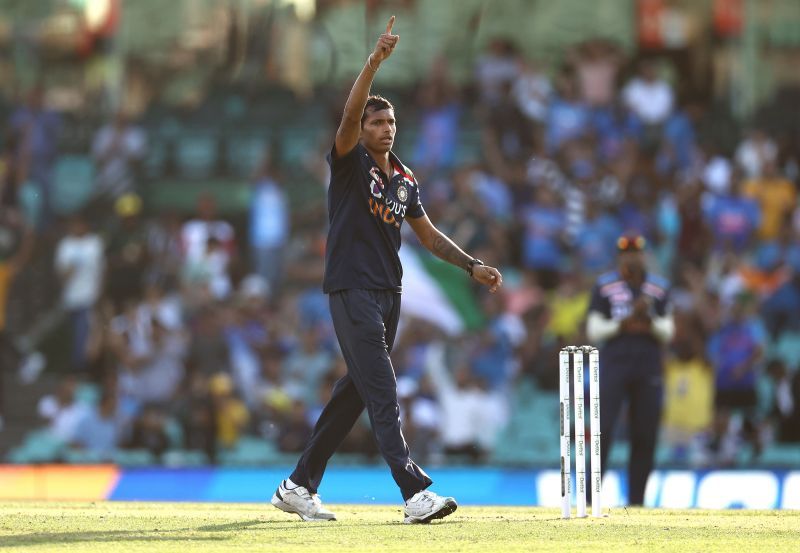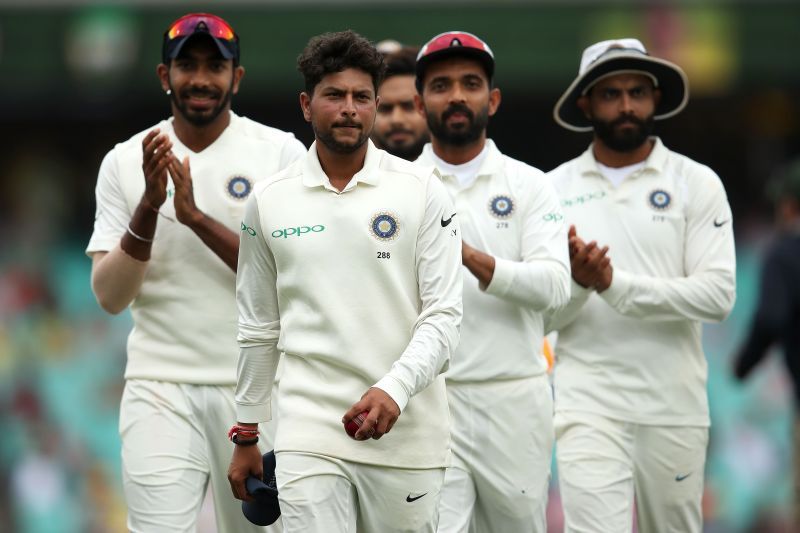
Should the Indian cricket team opt for an all-pace attack against Australia at Adelaide?

A few days ago, under the blaring floodlights at the Sydney Cricket Ground, the Indian cricket team, courtesy the array of fast bowlers at their disposal, ripped through the Australia A side. In fact, the visitors’ performance scaled such a peak during that phase that the hosts, who have had plenty of practice handling the pink-ball, seemed like a bunch of rabbits caught in the headlights.
However, inclement weather and the nature of the warm-up fixture meant that the Indian cricket team weren’t able to sew up a victory, although there were plenty of positives that arose through the course of the encounter.
The Indian cricket team’s batting core, comprising Hanuma Vihari, Mayank Agarwal and Shubman Gill got themselves among the runs, with each according the tourists some respite, as far as their batting calculations were concerned.
Additionally, Rishabh Pant provided a timely reminder of what he is capable of with the willow, meaning that the topsy-turvy ever-raging debate surrounding the identity of the first-choice wicket-keeper, took another turn.
The burning question though, revolved around the prospective composition of the Indian cricket team’s bowling attack, considering each of the fast bowlers had fared decently in the solitary pink-ball contest.

And, for those wondering, Umesh Yadav, who had been touted to be one of the Indian cricket team’s premier seaming option, didn’t even spend time in the middle, thereby highlighting the slight embarrassment of riches at the tourists’ disposal.
Consequently, there has been significant chatter hinting that the Indian cricket team might indeed field an all-pace attack come the first Test at Adelaide, not just because they have a plethora of alternatives, but also because the conditions (read the pink ball under floodlights) could resemble those that were exploited to the tee at the SCG, just a few days ago.
Yet, while there may be a temptation to make the most of the fast-bowling resources existing in their ranks, there are quite a few caveats the Indian cricket team might have to contemplate before the Day-Night Test at the Adelaide Oval.
So far, since 2015, there have been four pink-ball games at the Adelaide Oval, with Australia emerging victorious on each occasion. More intriguingly though, Nathan Lyon – arguably Australia’s second greatest spinner, has played a pivotal role during those wins, despite the long-drawn theories of the ball hooping around under lights and of course, of fast bowlers being more efficient under lights.
In fact, in the last Day-Night Test to be played in South Australia, Nathan Lyon bagged a five-wicket haul in the second essay, to consign Pakistan to an innings defeat. Prior to that, the off-spinner had taken 13 wickets across three similar games, with him scalping crucial wickets against New Zealand (in 2015), South Africa (in 2016) and England (in 2017).

Moreover, the Adelaide Oval, along with the SCG, has historically been a venue that has aided spinners, with visiting teams and even Australia often preferring an extra spinner.
And, while there might be an inclination to look away from those statistics, considering the novel facets a Day-Night Test brings to the fore, there has been enough evidence to suggest that the Adelaide Oval still remains one of the slower bowlers’ favourite stomping grounds.
Apart from the strip that is usually dished out in South Australia, there is another aspect that the Indian cricket team might want to look at, with that spelling the same as flexibility and variety.
Against Australia A, the Indian cricket team was thoroughly impressive in the first innings, especially when the ball decked off the surface at will. Post that though, when the pitch stopped providing assistance, the Indian cricket team’s bowling attack lacked a touch of bite and to an extent, even seemed monotonous and unpredictable.
In fact, barring the short-ball barrage Jasprit Bumrah and Mohammed Shami served up in the final session of that particular warm-up fixture, the pair of Ben McDermott and Jack Wildermuth didn’t necessarily face too many problems negotiating the Indian cricket team’s threat.

Mohammed Siraj, despite getting the better of Nic Maddinson early in the piece, looked devoid of ideas and was guilty of gifting runs, without posing any substantial wicket-taking threat. Navdeep Saini, meanwhile, was carted for 87 runs in the 16 overs he bowled.
Moreover, the duo has a tendency to leak runs, especially when they fail to hit their stride. Navdeep Saini has showcased that propensity in the limited white-ball opportunities he has had, whereas Mohammad Siraj has an economy rate in excess of 3 RPO in First-Class cricket, in addition to an astronomical economy rate in international cricket.
To put things into further perspective, the Indian cricket team would be missing the services of Ishant Sharma throughout the series. That only means that the lanky pacer, who has regularly been the Indian cricket team’s best defensive option, would have to be replaced by another bowler(s). And, on the fleeting signs Navdeep Saini and Mohammed Siraj have provided, neither looks capable of fulfilling that responsibility.
As for Umesh Yadav, well, the jury is still out on whether the fast bowler can replicate the success he has enjoyed in home conditions. Rather incredibly, for a pacer blessed with natural swinging ability, he has somehow always flattered to deceive, thereby not casting himself as someone capable of keeping the lid on the scoring rate, especially when the ball has lost its sheen.
Contextually speaking, the Indian cricket team’s potency will be blunted significantly if they aren’t able to keep things tight, for it won’t just lead to a releasing of pressure. It will also force Jasprit Bumrah and Mohammed Shami to abandon their attacking instincts, in favour of a containing job.

Indian cricket team has looked more comfortable with a spinner in the fold
Most importantly though, the Indian cricket team just doesn’t seem as dangerous an outfit sans a spinner – something that can be attributed to them having historically played with one or two bowlers of that ilk.
The aforementioned trait was woefully exposed the last time the Indian cricket team was on Australian shores, incidentally. After winning the first Test at the Adelaide Oval, Virat Kohli opted for an all-pace attack at Perth. Unsurprisingly, the Indian cricket team was culpable of distributing more runs that what was ideal and they succumbed to a chastening defeat.
For the next couple of matches, they played Ravindra Jadeja (at Melbourne and Sydney) and Kuldeep Yadav (at the SCG), with both of them performing their duties to perfection. While Ravindra Jadeja accounted for 7 batsmen across three innings, Kuldeep Yadav popped up with a five-wicket haul at the SCG.
Plus, Ravindra Jadeja conceded runs at an economy rate of 2.24, whereas Kuldeep Yadav collected figures of 5-99 in 31.5 overs. In fact, the proclivity of the Indian cricket team spinners to not ship runs allowed Jasprit Bumrah and Mohammed Shami to bowl attacking lines, scalping 12 out of the 20 wickets that fell at the MCG.

Furthermore, the Australians’ middle order has not always been comfortable starting against spin. Joe Burns, Marcus Harris, Tim Paine and Travis Head have all looked circumspect against slower bowlers at some point in their careers, meaning that that could be a potential avenue that can be explored by the Indian cricket team.
Thus, there seems to be a case for one of Kuldeep Yadav or Ravichandran Ashwin to be included in the playing XI for the game at Adelaide, not just because of the variation they would bring to the fore, but also because they might be able to play the part Ishant Sharma has regularly done.
Also, with Ravichandran Ashwin labelled as a competitor to Nathan Lyon for the ‘best off-spinner in the world’ tag, there is simply no reason why the Indian cricket team member can’t eclipse what the Australian might produce at Adelaide.
To cap off the argument, they might have the conditions on their side as well, in addition to the Australians’ potential vulnerability against spin. And, lest we forget, none of the three incumbent Indian cricket team pacers have showcased credentials that might entice Virat Kohli to take such an enormous gamble.
A few days ago, at the SCG, the Indian cricket team’s fast bowlers highlighted the merits they could bring to the fore. Yet, just a day or two later, they also portrayed the chinks that currently exist in that armour, specifying why it might not be prudent to put all eggs in that basket and adopt that course of action, at least at this juncture.
Last time out, the Indian cricket team, in a bid to sustain their assault, preferred an all-pace attack, only for it to fall flat on its face at Perth. However, with the Australians not at their best, the Indian cricket team wasn’t punished, meaning that they overcame the trough and reigned supreme Down Under.

But there remains a feeling that this time round, especially with Messrs. David Warner, Marnus Labuschagne and Steve Smith in the fray, the hosts might not be as forgiving. And, in such clutch situations, it is imperative that the Indian cricket team doesn’t get carried away and thinks through its decisions, rather than just riding the wave of emotion.
There is simply no denying that the Indian cricket team has metamorphosed from a side that was dependent on its spinners to one that can bank on its pacers to tear the opposition to shreds. The very incidence that the Indian cricket team finds itself in a situation contemplating an all-pace attack is testament to that fact.
Yet, they might just have to put that idea on the back-burner for now. After all, the last thing the Indian cricket team would want is to be caught in the South Australian floodlights, isn’t it?